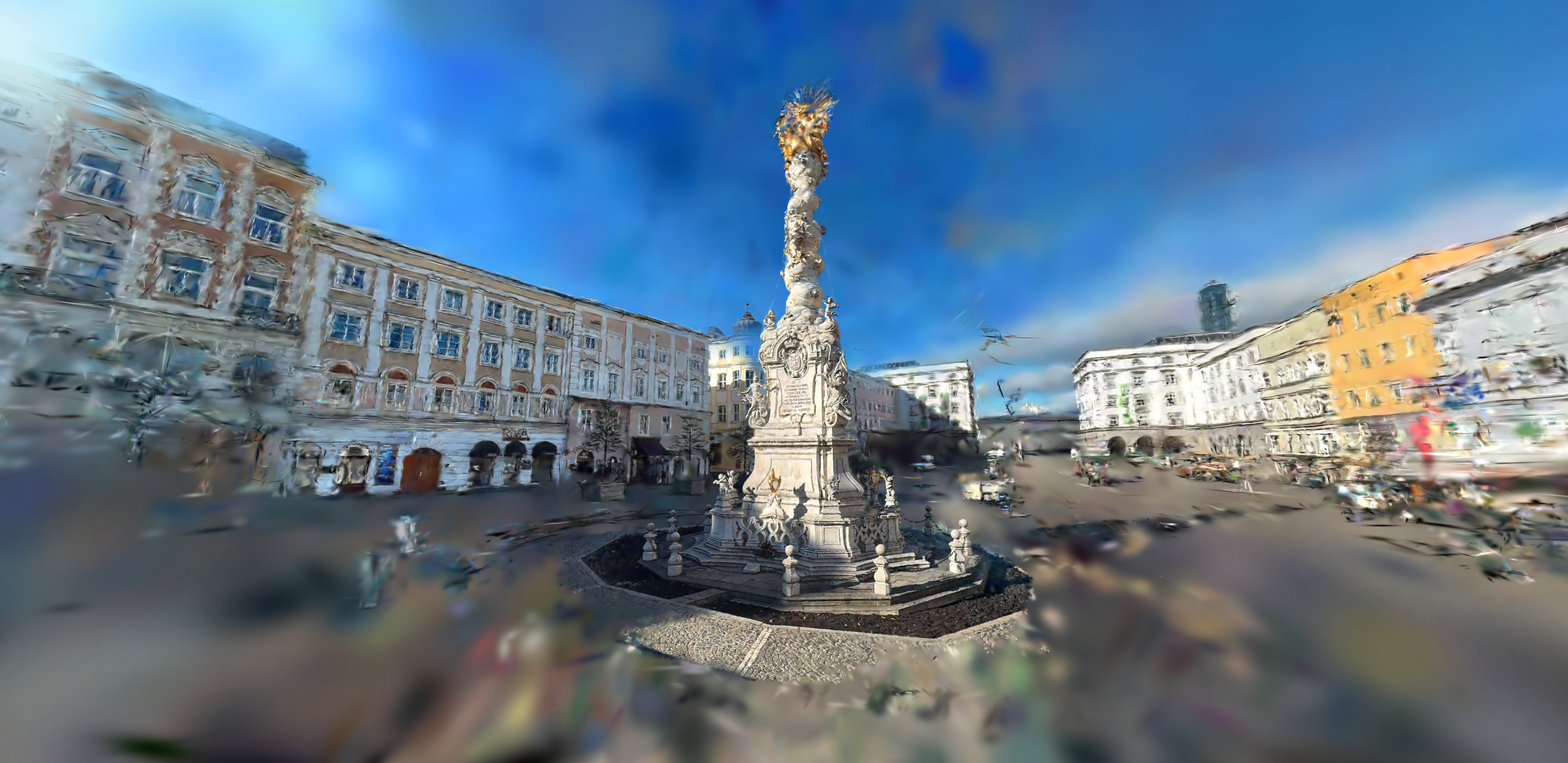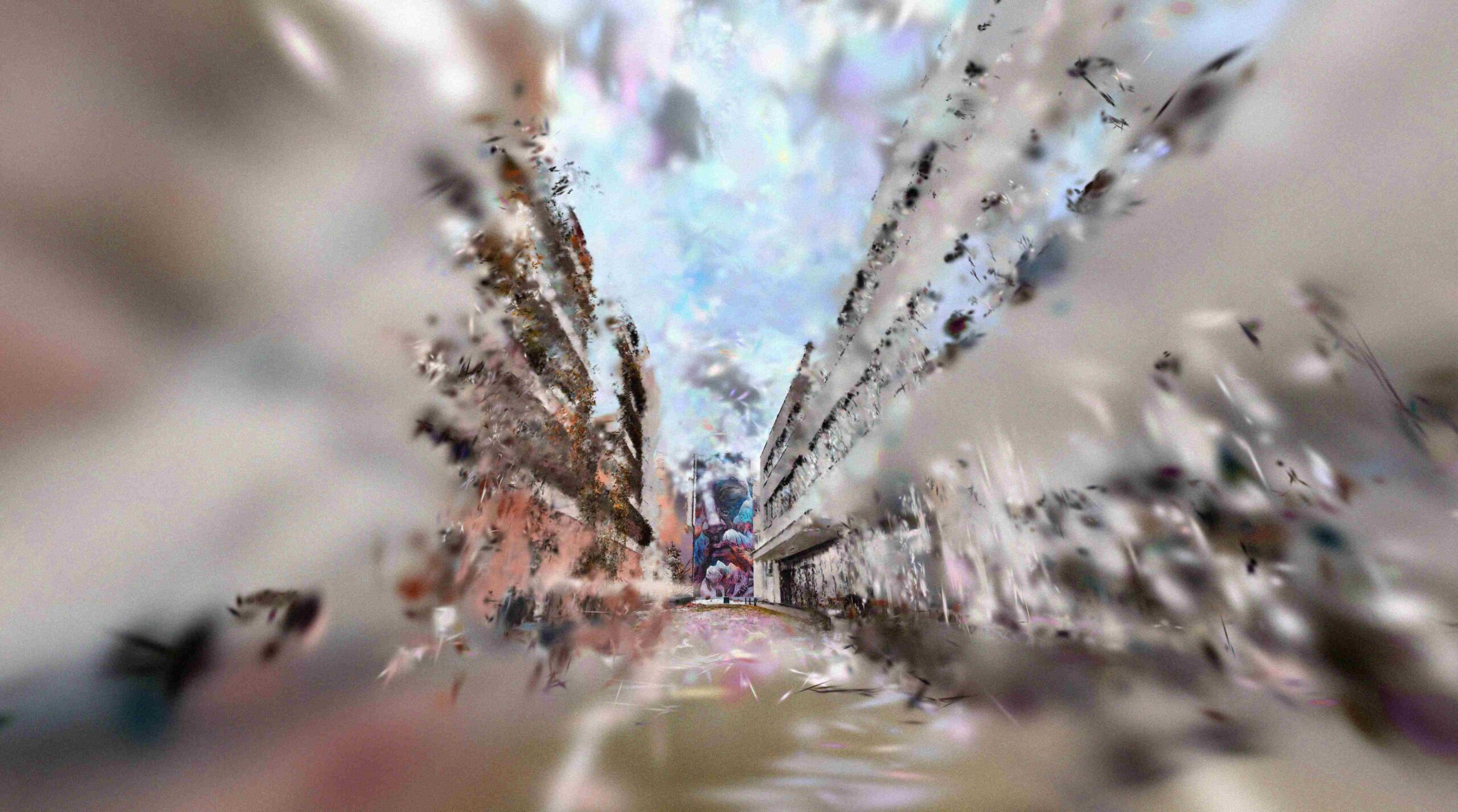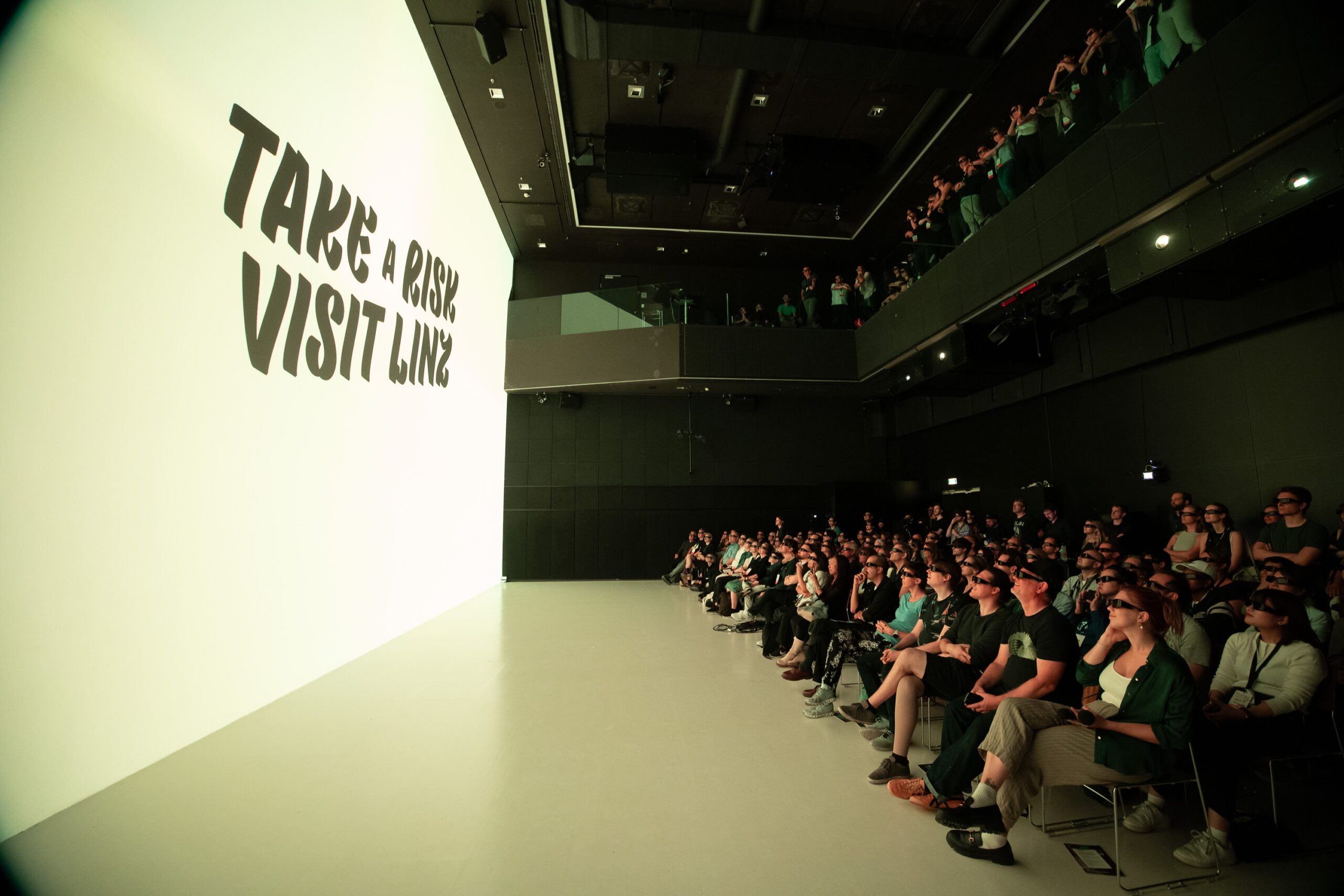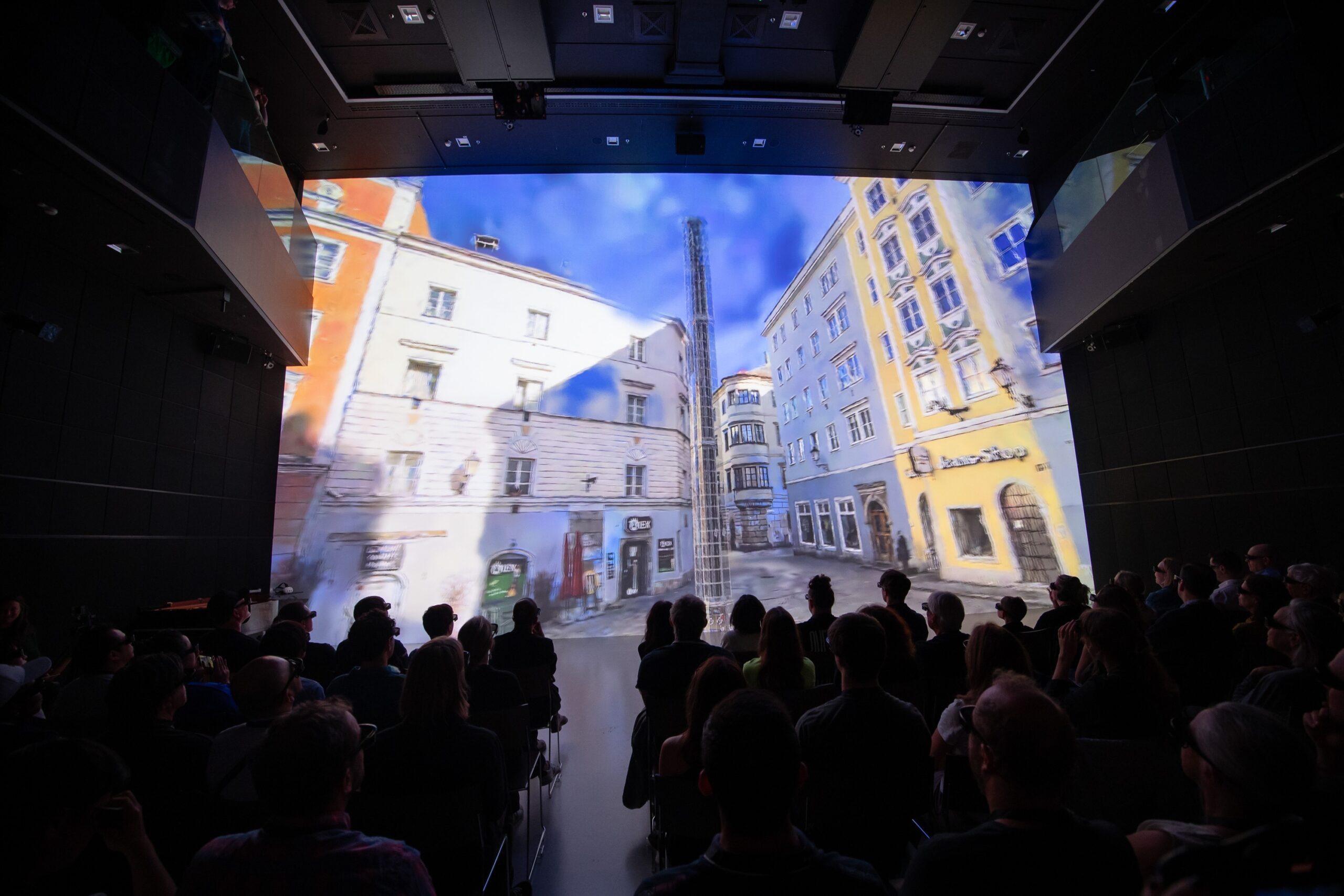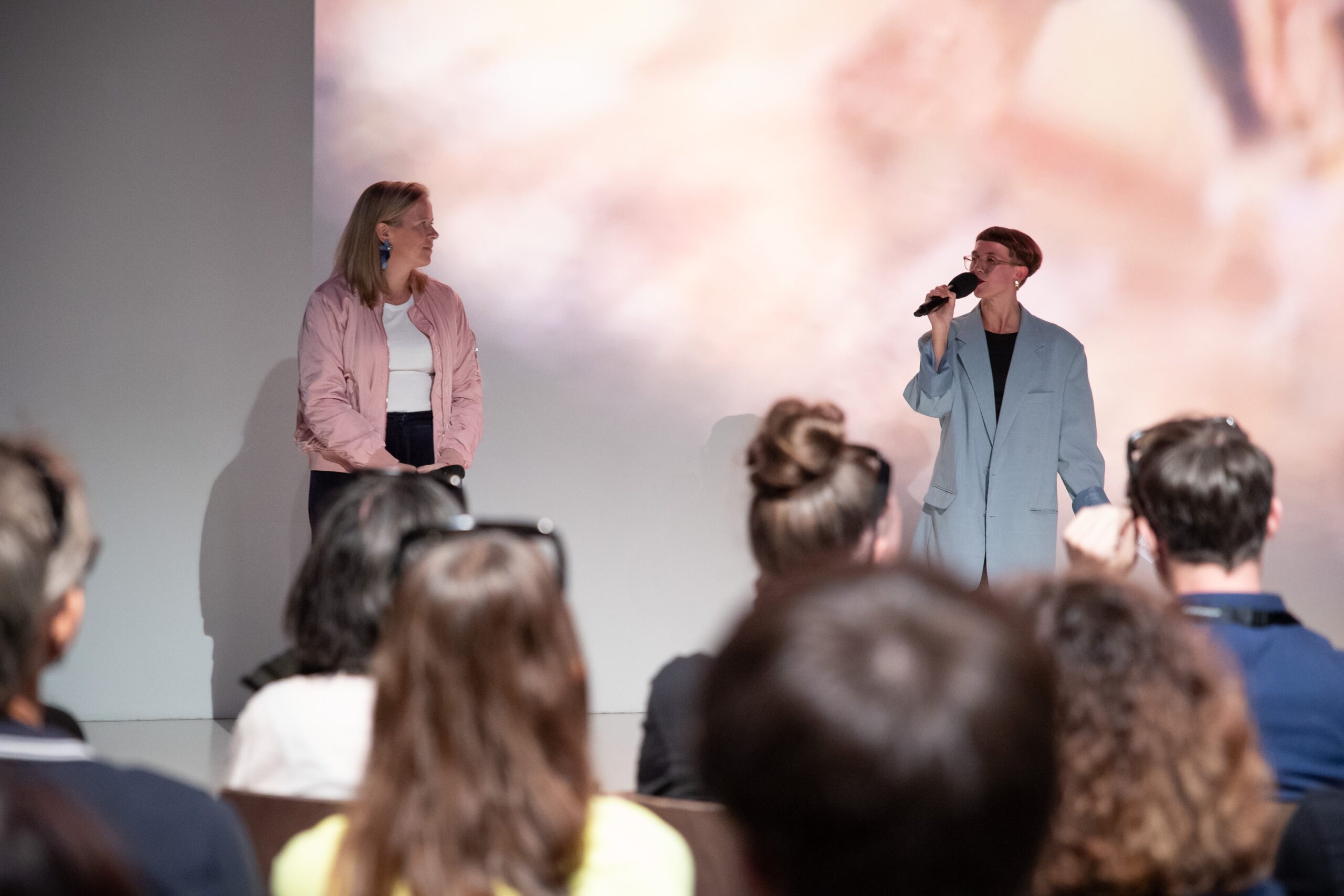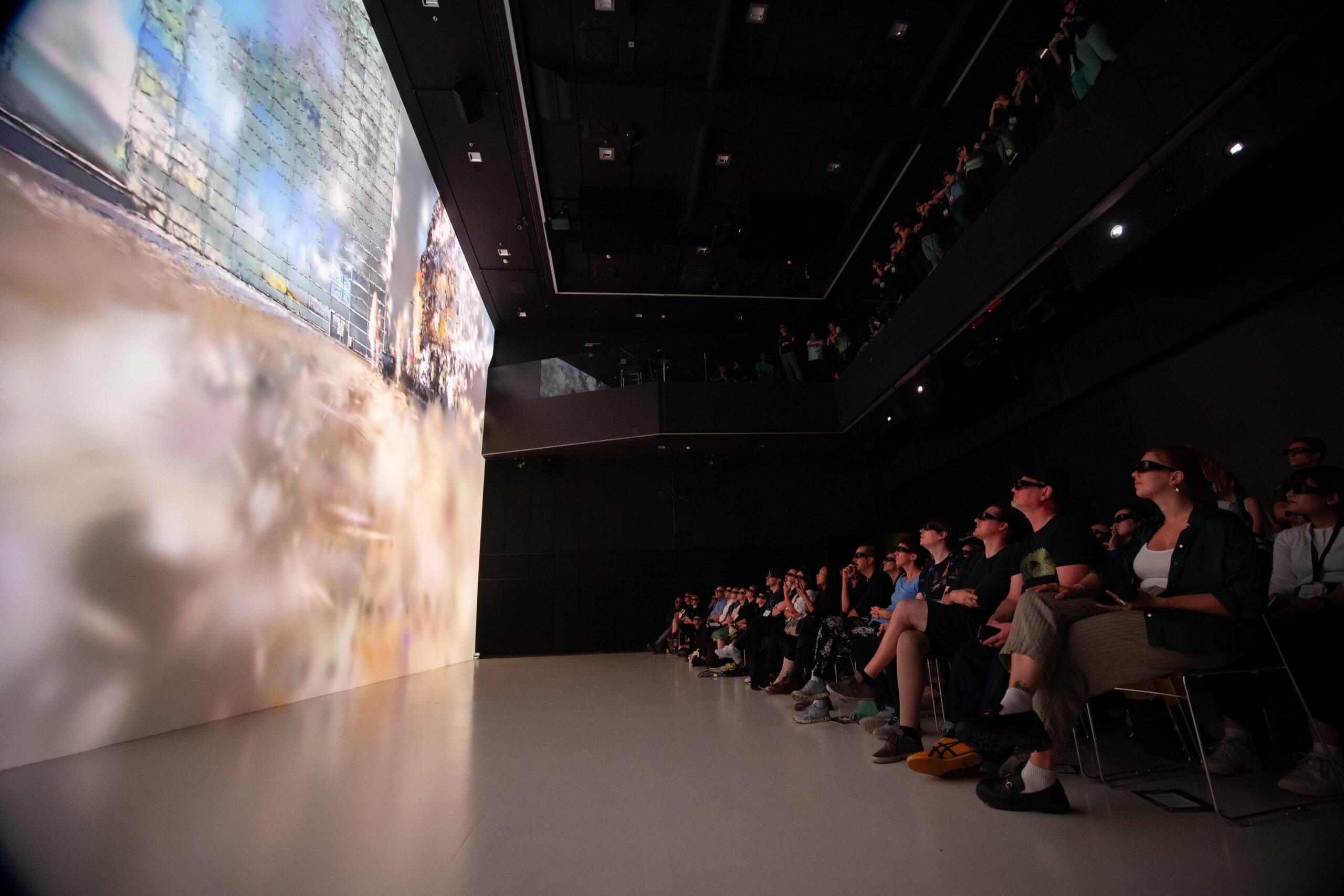Beyond Curiosity is a participatory virtual tour of UNESCO City of Media Arts Linz that employs cutting-edge 3D Gaussian Splatting. The key highlight: visitors and residents of Linz can utilize the technology to explore the city in a new way and share their perspectives with the world.
Beyond Curiosity is a collaborative endeavor of Linz Tourism and the Ars Electronica Futurelab. It invites visitors as well as residents to get to know the Upper Austrian city of Linz through the joy of exploration and imagination. The project consists of two pillars: a new kind of video tour that premiered at Expo 2025 in Osaka, Japan, and the opportunity for everyone to become active themselves via a new website. At the core of Beyond Curiosity lies user-friendly, cutting-edge “Gaussian Splatting” technology.
Getting to know Linz in a new way
Beyond Curiosity redefines traditional online city tours by offering a dynamic visual experience composed of 3D scans created with “Gaussian Splatting”, a cutting-edge technology which turns photos into 3D data. A showcase video captures the spirit of Linz through fragmented yet recognizable cityscapes – inviting imagination and the joy of exploration. The Beyond Curiosity website maps out where scans of Linz’s key sights were taken and provides details about each location. Users are also encouraged to create and share their own scans using the Scaniverse app, guided by a tutorial video.
From point cloud data to 3D reconstructions
Gaussian Splatting generates highly detailed 3D representations by processing images into sparse point cloud data and layering thousands of tiny, overlapping Gaussian shapes. These soft, blurry ellipses blend to form smooth and realistic surfaces, capturing depth, lighting, and perspective with remarkable accuracy. Typically, Gaussian Splatting is used to achieve high-fidelity 3D reconstructions – like a photograph, but in three dimensions.
Most research and development in this field focus on enhancing realism, improving visual accuracy, and optimizing performance. However, Beyond Curiosity takes a different approach, using this technology in an interpreting way to deconstruct reality rather than replicate it. This shift from pure representation to artistic interpretation unlocks new creative possibilities, shaping a unique visual language, yet rarely explored in 3D imaging. The Ars Electronica Futurelab started experimenting with the novel technology in this way in 2024 – with Persistent Time Sink Resonance, a winner of the Futurelab’s internal Ideas Expedition.
The art behind the technology
For the Beyond Curiosity virtual tour video, the Futurelab team created more than 200 individual “splats” along with additional processed 360-degree video footage to comprehensively yet enigmatically showcase Linz’s landmarks from multiple perspectives. The base material was then carefully curated and digitally hand-stitched into a dreamlike sequence, with dynamic shots highlighting the city’s individual characteristics.
The visual style of the virtual tour video echoes Impressionism, using fragmentation – i.e. breaking down and splitting visual elements into smaller parts – as a tool for futuristic reinterpretation. The sound design is based on Foley recordings captured from various districts of Linz. Foley refers to the art of creating and recording everyday sound effects like footsteps, rustling fabric, or ambient textures in a controlled environment.
A vision for the future
Though human figures are absent from the scans, people remain at the heart of the project—they are the ones capturing and uncovering Linz’s hidden and familiar features. The true value of Beyond Curiosity lies in its innovative creation process and its mission to make new technologies for creative expression and exploration accessible to all.
This concept aligns with Expo 2025 Osaka’s theme, “Designing Future Society for Our Lives” where Beyond Curiosity premiered on April 16. The Ars Electronica Futurelab also hosted two family-friendly workshops during the Festival of Curiosity at Linz’s Tabakfabrik on May 24, 2025, where participants could scan inspiring elements to contribute to a collective showcase. Additionally, Beyond Curiosity was featured at the Ars Electronica Festival 2025 and will continue to be shared through Linz Tourism’s channels – ensuring a lasting impact on how Linz is perceived and explored.
Credits
Ars Electronica Futurelab: Kerstin Blätterbinder, Denise Hirtenfelder, Nicolas Naveau, Hideaki Ogawa, Maria Pfeifer, Johannes Pöll, Raphael Schaumburg-Lippe
Music & Sounddesign: Arno Deutschbauer
PARTNER: Linz Tourism
